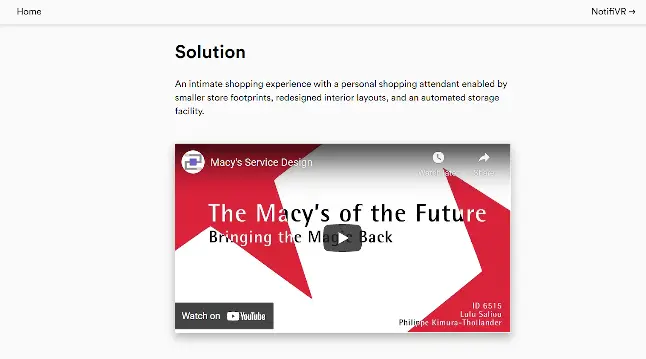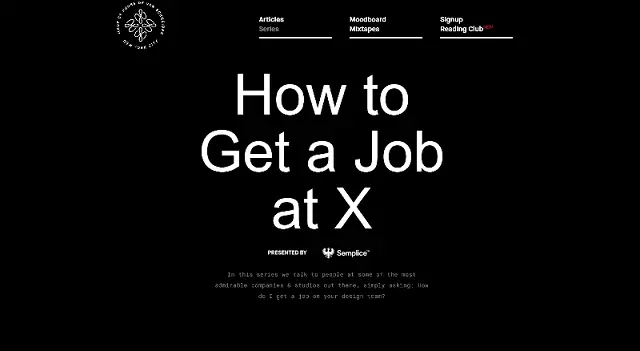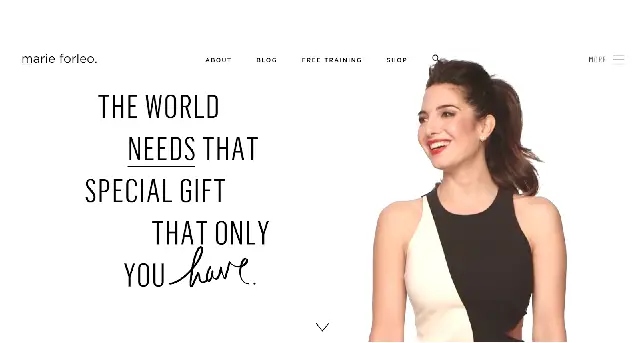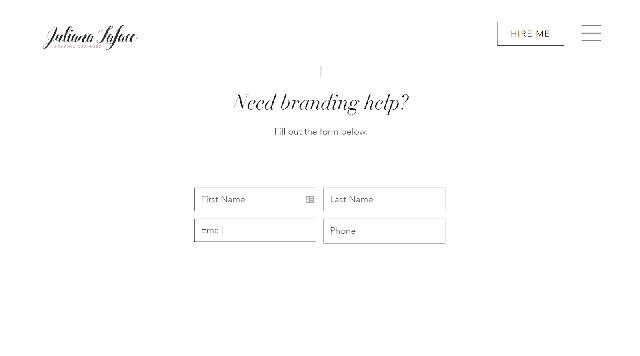More than 50 percent of hiring managers or recruiters will check the candidate’s online presence before inviting them for an interview. The lack of online presence will show that they aren’t engaged in the industry and don’t learn how people perceive them.
Creating a portfolio website will help you build a positive online presence because you can showcase your work and demonstrate your skills.

In this article, you’re about to learn about the reasons you should have an online portfolio and how to make it stand out.
Why You Need an Online Portfolio
The hiring process can be the strong reason why you need to build an online portfolio. Yet, there are still plenty of benefits of this site for various professionals, and here are three main points.
1. Stand Out
A portfolio website lets you have full control over your site, which can be a great chance to make it unique and help it stand out. You can employ attractive techniques, such as parallax effects, customized typography, or interactive design elements.
If the portfolio is impressive, many online sites, like Awwwards or Dribble, will feature it, which help attract more traffic.
2. Improved Reach and Accessibility
A portfolio website helps broaden your market. It will pop up in the search results when people search your industry or name if you correctly use search engine optimization (SEO).
The site also gives potential clients easy access to check out your work see what you’ve explained on the CV or cover letter. A portfolio website enables you to organize your projects and other relevant information, like testimonials from previous clients, in one place.
3. It’s Just Cheaper and Easier to Make
Compared to a physical portfolio, an online portfolio will cost you less energy, time, and money. You don’t need to duplicate your pieces and lug them around.
Moreover, no coding knowledge is needed when you create your site with the help of easy-to-use platforms like WordPress and site builders. Just pick a design element, like text boxes and images, then put it wherever you want when customizing the site.
They also offer designer-made portfolio website templates as a foundation when building the portfolio, which helps speed up the process.
How to Make Your Online Portfolio Stand Out
Many people may have realized the importance of having a portfolio site, so the competition is getting tougher within the same industry. Use these tips to help you scale your online portfolio and be seen among the crowd.
1. Show the Process
Maximize the portfolio advantages by showing the results’ process. Potential employers need more than the final result to decide whether you’re the best candidate to work with–they need assurance.
Convince the employer with case studies. These display your problem-solving skills in details as you define:
- The project’s problem and challenges
- Your role on the project
- The metrics and your solution to the problem
- Your steps on developing the project
- The outcome
Include the client’s feedback and lessons learned if you think necessary for proving your quality.
Philippe Kimura-Thollander has inspiring case studies. Kimura-Thollander thoroughly explains each project’s process, from research to prototype, and integrates useful media, like screenshots and videos. He even provides links to the project resources, such as GitHub and the SketchUp model.

2. Use Social Proof
Social proof has the power to influence employers’ decisions to work with you because it proves your credibility.
Contact your previous clients for testimonials, using emails or Google reviews, and ask whether you can include it on your portfolio website. To ensure they send strong reviews, include a pre-written example to show how a well-formatted review looks.
You can’t pay for testimonials as it’s considered manipulative. Reach out to your professors or coworkers to verify your quality of work and skills if you haven’t had previous clients.
3. Show a Before and After
Showcasing your best projects may work to convince prospective clients, but consider having a section where you compare one of your first projects to the one you’re really proud of. This page helps them notice your skill development and stress how experienced you are. Expresses certain emotions, such as excitement and playfulness. Get help from a color palette generator, like Canva, for a quicker selecting process.
If you use WordPress and choose photos for displaying the before and after, install the plugin Twenty20 Image Before-After. This plugin gives the slider effect for your before and after photos easily through widgets and supports image alt to boost your SEO ranking.
Also Read: 5 Data Presentation Hacks | Present data like a Pro!
4. Share Your Story

The about page helps build a personal connection as you tell potential clients about your interests, passions, and career history.
Although it can be a great way to share your story thoroughly, keep it concise and straightforward. Make sure this section gives an idea of the type of person you are during the working process.
To give you the inspiration to start writing your about page, see these examples.
- Steve McGugan not only tells his background but also explains the services, helping prospective clients understand what he offers.
- Wendy Ju mentions her skills and interests, also provides a downloadable resume.
- Damian Watracz includes professional photos during special occasions, like becoming a speaker, working, and traveling. As a web and UI designer, Watracz also uses logos to represent the brands he has worked with.
5. Include Awards and Accolades
A list of awards and accolades helps increase your trustworthiness and reliability. Link the awards to their official websites to grow your SEO ranking because outgoing links will rank your website higher on the search result page.
If you have a long list of awards, ensure it looks organized. For instance, the photographer Amit Mehra categorizes his achievements using specific headings, like awards, solo exhibitions, and workshops.
6. Run a Blog
Blogging lets you establish yourself as an authority in the niche by chiming in on topics or sharing your thoughts. It also attracts more traffic because you use relevant keywords to be discovered by search engines.
Start by writing tips, listicles, or how-to articles. If you’re more confident in talking, go ahead with podcasts or videos.
Interviewing other people can also be useful content–for example, Tobias van Schneider develops a series where he lets other designers from major companies share how they get hired.

You can also connect the content with hot topics or frequent updates, like camera or phone reviews. Google prioritizes them as the Query Deserves Freshness (QDF) that influences ranking factor.
7. Use Personal Branding
As a personal brand is the authentic perception of yourself, ensure every design element on the portfolio website represents your personality and what makes you unique.
For example, the female entrepreneur Marie Forleo shows her supportive attitude by using motivational quotes and minimalistic design to emphasize the words.

Here are several brand elements to consider.
- Creates a good impression and builds memorability. Think about how you want to be seen when selecting the logo design.
- Sparks certain feelings about your brand. Write the slogan in the present tense and keep it short.
- Color scheme. Expresses certain emotions, such as excitement and playfulness. Get help from a color palette generator, like Canva, for a quicker selecting process.
- Different typography conveys different feelings. For example, serif fonts give a sophisticated look, while san-serif fonts represent modern personality. Understand the meaning behind the fonts you choose before designing a portfolio site.
Also Read: 5 tips for building heavenly marketing graphics
8. Use Creative Copy
Creative copy helps the personal brand stand out as it represents the unique brand voice. There are no strict rules in creating copy, but make sure it’s clear and the UX is easy by using it on contact pages, menu, and other elements on the page to intrigue visitors to take action.
If you want to deliver a friendly tone, Aashish’s contact page can be a suitable example as he uses emojis and asks visitors to reach him casually. You can also pinpoint visitors’ pain points by asking a question first, like what Juliana Laface does.

9. Make Getting in Touch Easy

When people visit your site, there’s a chance they get distracted. Thus, make the contact information visible by putting the contact page on the menu or at the top of each page for email or social media buttons only.
Get a contact form to help visitors send you a message without the hassle and make the messages tracking process easier for you. For WordPress users, install the WPForms plugin to create a customizable contact form.
Also, consider having a chatbot or chat feature to provide fast response and better customer service.
You can include a phone number as most people are more likely to contact you if your website has the click-to-call option. Yet, for safety purposes, make sure it’s a business phone number and not your personal one.
Conclusion
Building a portfolio website is a crucial step to get discovered and stand out in the job market. It also helps you save time, money, and energy to organize professional information.
To make a well-made portfolio, consider the design and other important elements, such as case studies and social proof.
Make your potential employers excited about meeting you since they have known your qualifications beforehand through your outstanding online portfolio.